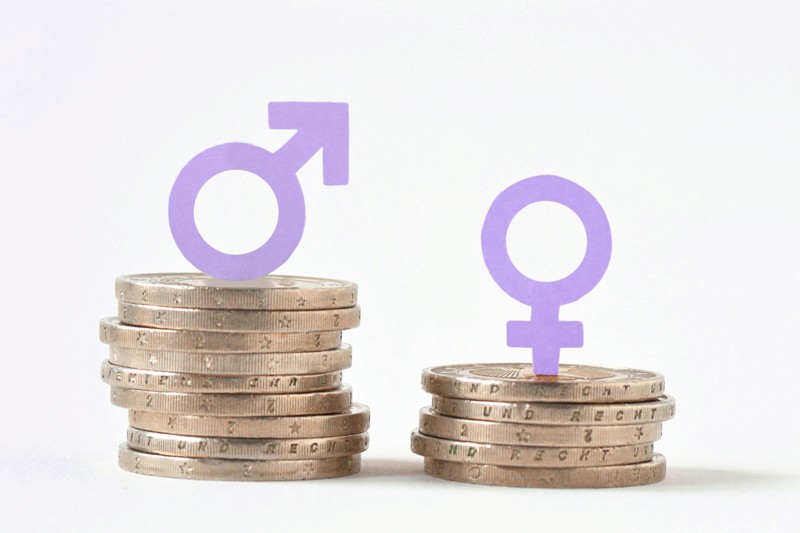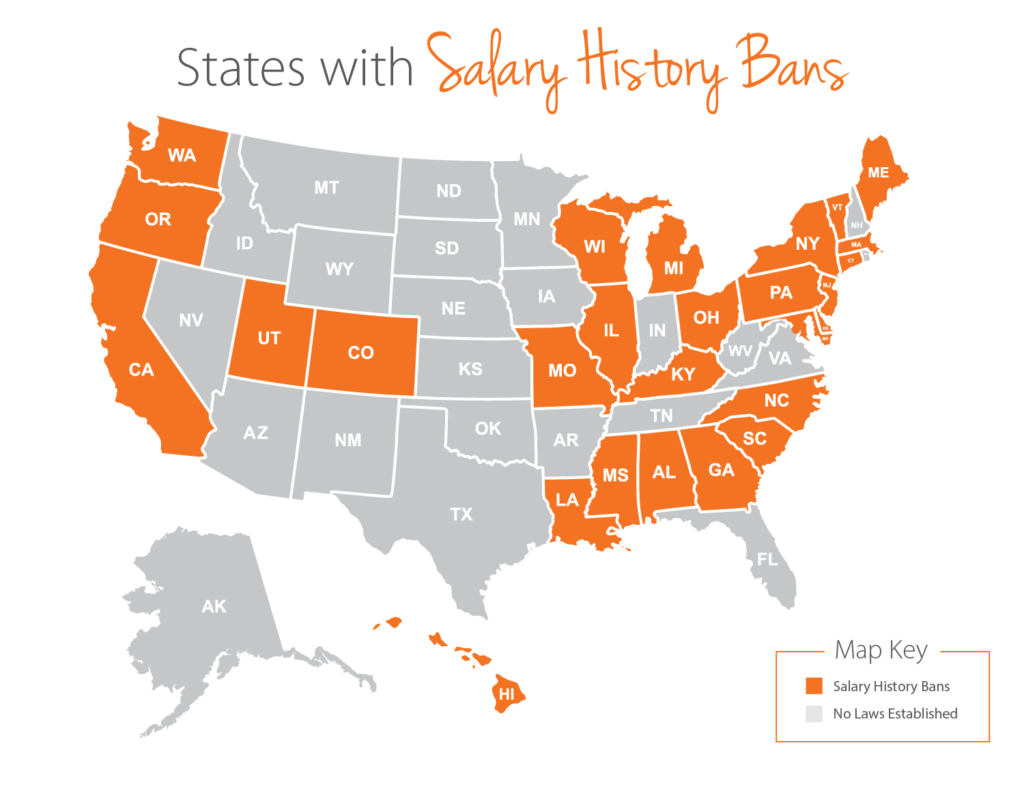
“How much are you making at your current job?”
For most people, this is a common and expected question in a job interview, and on its face, it may appear harmless. However, because women, particularly women of color, earn less than their male counterparts in virtually every industry and occupation in this country, this common question can result in perpetuating gender and race-based wage gaps.
In an attempt to prevent past pay discrimination from following women from job to job, a growing number of states and cities have passed laws that prohibit employers from asking about or relying on a job applicant’s prior pay to set their new pay. Because these new laws—often referred to as salary history bans—have emerged fairly recently, there has been relatively little research on their impact thus far.
However, a recently released study has found that female earnings are increasing relative to male earnings in states that have adopted these laws. This has resulted in a narrowing of the gender wage gap—consistent with the intended goals of such laws and provides support for their continued passage in additional states.
The Pervasive Gender Pay Gap
In 1963, Congress passed the Equal Pay Act to combat what it recognized were pervasive “wage differentials based on sex” in this country.
More than 55 years later, women make up almost half of the U.S. workforce, more than half are the primary breadwinners in their households, and they receive more than half of bachelor’s, master’s and doctorate degrees.
Yet, on average, women continue to earn less than men across all education levels and in virtually every occupation for which there is sufficient data to calculate an earnings ratio between women and men.
U.S. Census Bureau data show that in 2019, women working full time, year round, typically made just 82 cents to every dollar paid to their male counterparts.
For women of color, the gaps are even larger: African American women and Native women made 62 cents and 57 cents, respectively, to every dollar paid to white, non-Hispanic men last year, and Latinas made an abysmal 54 cents to the dollar.
Collectively, the gender wage gap costs women in the U.S. over $840 billion a year.
This persistent inequality in earnings translates into lower lifetime pay for women, less income for the families they support and higher rates of poverty everywhere. In fact, eliminating the gender wage gap would reduce the poverty rates of working women and their families by more than half and would add $512.6 billion to the national economy.
Various factors contribute to the overall gender wage gap including intentional discrimination, unconscious bias or stereotypes, a lack of affordable child care, a lack of adequate—or for many workers any—access to paid leave, and occupational segregation, which refers to the fact that women make up the majority of workers in minimum and low wage industries and occupations and are underrepresented in higher-paid fields.
Additionally, caregiving responsibilities are still primarily performed by women, and the time that women spend outside of the workforce for this purpose also contributes to their lower average earnings as compared to men.
Moreover, studies show that women earn less than men starting just one year out of college—even when controlling for factors like major, occupation and hours worked. The same holds true for female graduates of business school, who start at lower salaries than men with MBAs despite having “similar career paths, performance and education.”
Because women often begin their careers earning lower salaries than men, and in light of the pervasive gender wage gap that exists, employers who rely on a candidate’s prior pay to set their new salary allow those existing gender-based pay disparities to continue.
Salary History Bans
In recognition of the ways that questions about prior salary perpetuate past pay discrimination, some legislatures have enacted salary history bans (SHBs).
Currently, a total of 16 states, 17 cities and Puerto Rico have passed either laws or executive orders prohibiting employers from asking about or relying on prior salary. These laws vary in some respects. For example, some apply to all workers, while others apply only to government employees. Some laws allow an employer to discuss or rely on a prospective employee’s prior salary in setting their new pay if the employee voluntarily chooses to provide that information.

At the federal level, the pending 2019 Paycheck Fairness Act would prohibit employers nationwide from seeking or relying on salary history. This legislation has passed out of the House in March 2019, but still has not been brought up for a vote in the Republican-controlled Senate.
A growing number of companies have voluntarily opted to change their hiring policies to eliminate questions about a job candidate’s prior pay—even when they are not required to do so by law, recognizing the harm of perpetuating pay discrimination of the past.
The Society for Human Resource Management—a trusted resource for HR professionals—has declared that “salary history should not be a factor in setting compensation,” and instead:
“Compensation decisions should be based on the value of the position to the organization, competition in the market and other bona fide business factors.”
New research—conducted by Benjamin Hansen, of the University of Oregon, and Drew McNichols, of the University of California-San Diego—has confirmed what legislators, equal pay advocates and proactive employers have long suspected: When employers do not seek or rely on a job candidate’s prior salary, it results in a narrowing of the overall gender wage gap.
Analyzing state SHBs that have been enacted through 2019, with a primary focus on California’s ban, which took effect January 1, 2018, the question these researchers sought to answer was simple:
Have these CHBs had their intended effect to close the gender wage gap?
The answer, based on their research of the early effects of these new laws, is yes. Specifically, they found that overall, these laws “appear to be having their intended impact, increasing the earnings for women.”
Of particular note, the research shows that this is wage increase is particularly true for women at an age where they had “likely experienced an earnings penalty due to childbirth.” In this respect, the researchers found a more pronounced earnings increase for women over 35 and “those in married households with all of their children older than 5.”
These findings show that for all women—but particularly those who are more likely to reenter the workforce after taking time off for caregiving responsibilities—it is critical that employers rely on factors such as skill, experience, training, or education in setting pay. This, rather than arbitrarily relying on the salary they were last paid, which will naturally be lower than their counterparts—primarily male—who did not experience a gap in employment.
It is incumbent upon employers to assess the value of prospective employees based on these kinds of job-related factors, rather than prior salary, which is at best a proxy of job-related qualities—but at worst, and likely more often, a reflection of past pay discrimination, a lack of family-friendly workplace policies, and stereotypes about new parents based on gender.
This latter phenomenon is known as the motherhood penalty. Studies show that workers who are fathers are often rewarded, including through higher pay, because they are seen as their family’s breadwinner—whereas mothers are often penalized because of employer assumptions about the value of mothers as workers. Illustrative of that point: In 2019, mothers overall earned just 70 cents to every dollar paid to dads.
In light of the relatively recent passage of these SHBs, the study’s authors acknowledge that more research is needed to evaluate their longer-term effects.
However, the promising results of this research provide an important confirmation that after an initial stage of implementation, the laws that were evaluated have accomplished their primary goal of reducing the overall disparity in earnings between men and women.

The Need for Innovative Policy Responses
The current pace at which the gender wage gap is closing has slowed down over the last decade, and if things continue at the current rate, men and women in the U.S. will not reach wage parity until 2059.
Given the persistence and pervasiveness of the gender wage gap and the economic toll it takes on women and families in this country, we need innovative policy responses to address its various causes. Prior salary bans are one important strategy for stopping the cycle of wage discrimination, as evidenced by this new research.
It is therefore imperative that advocates for equal pay continue to advance salary history bans and other legal reforms that are necessary close the gender wage gap and ensure that women ultimately reach pay parity with men. We cannot afford to wait another 40 years.





